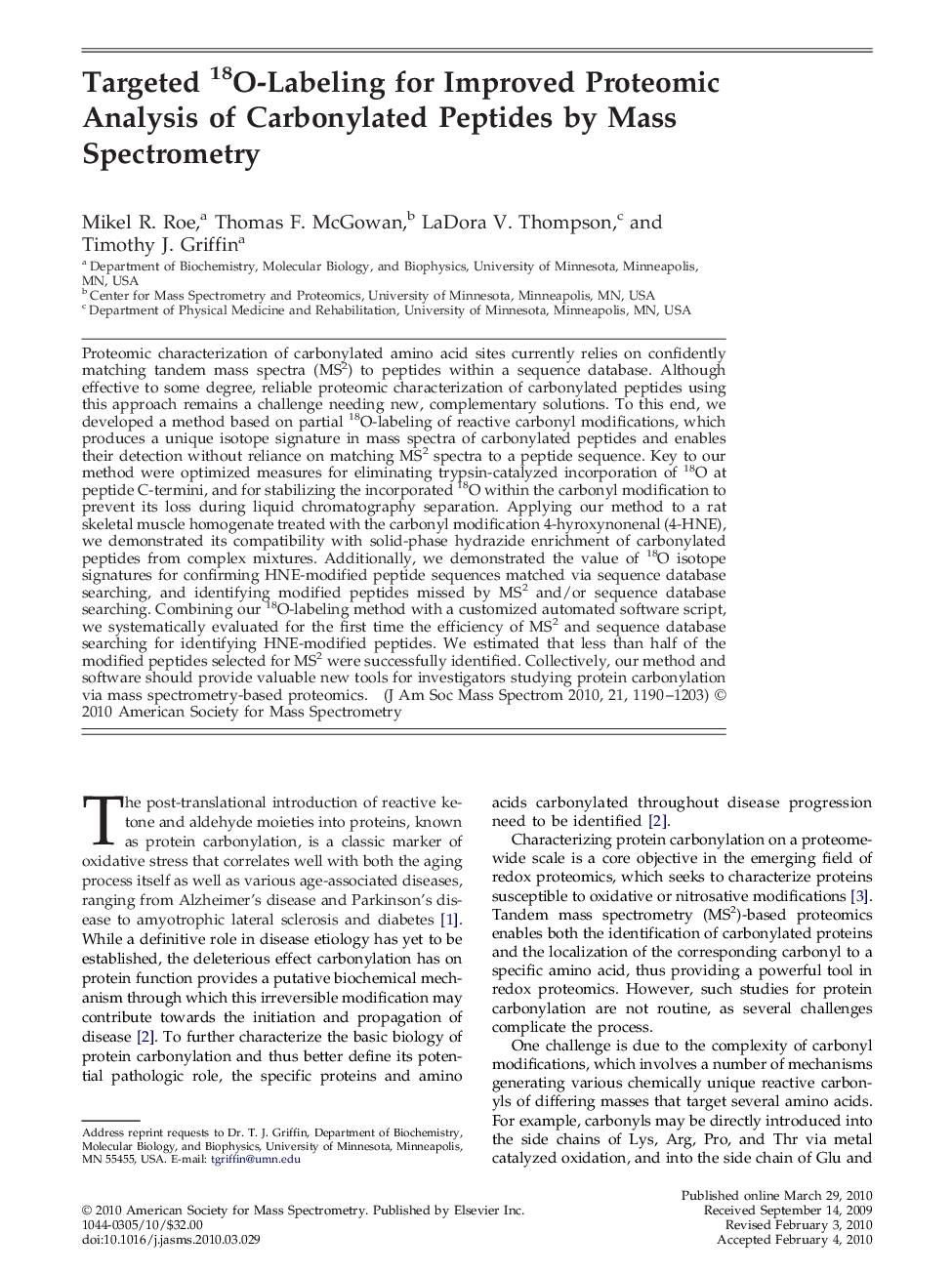| Article ID | Journal | Published Year | Pages | File Type |
|---|---|---|---|---|
| 1195395 | Journal of the American Society for Mass Spectrometry | 2010 | 14 Pages |
Proteomic characterization of carbonylated amino acid sites currently relies on confidently matching tandem mass spectra (MS2) to peptides within a sequence database. Although effective to some degree, reliable proteomic characterization of carbonylated peptides using this approach remains a challenge needing new, complementary solutions. To this end, we developed a method based on partial 18O-labeling of reactive carbonyl modifications, which produces a unique isotope signature in mass spectra of carbonylated peptides and enables their detection without reliance on matching MS2 spectra to a peptide sequence. Key to our method were optimized measures for eliminating trypsin-catalyzed incorporation of 18O at peptide C-termini, and for stabilizing the incorporated 18O within the carbonyl modification to prevent its loss during liquid chromatography separation. Applying our method to a rat skeletal muscle homogenate treated with the carbonyl modification 4-hyroxynonenal (4-HNE), we demonstrated its compatibility with solid-phase hydrazide enrichment of carbonylated peptides from complex mixtures. Additionally, we demonstrated the value of 18O isotope signatures for confirming HNE-modified peptide sequences matched via sequence database searching, and identifying modified peptides missed by MS2 and/or sequence database searching. Combining our 18O-labeling method with a customized automated software script, we systematically evaluated for the first time the efficiency of MS2 and sequence database searching for identifying HNE-modified peptides. We estimated that less than half of the modified peptides selected for MS2 were successfully identified. Collectively, our method and software should provide valuable new tools for investigators studying protein carbonylation via mass spectrometry-based proteomics.
Graphical AbstractTargeted labeling of enriched carbonylated peptides with H218O introduces unique 18O isotope signatures by which to readily distinguish them in mass spectra.Figure optionsDownload full-size imageDownload high-quality image (45 K)Download as PowerPoint slide
